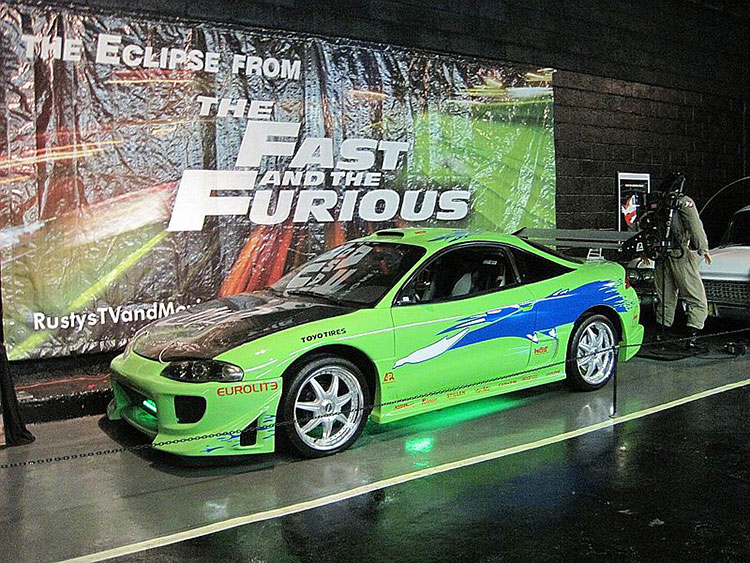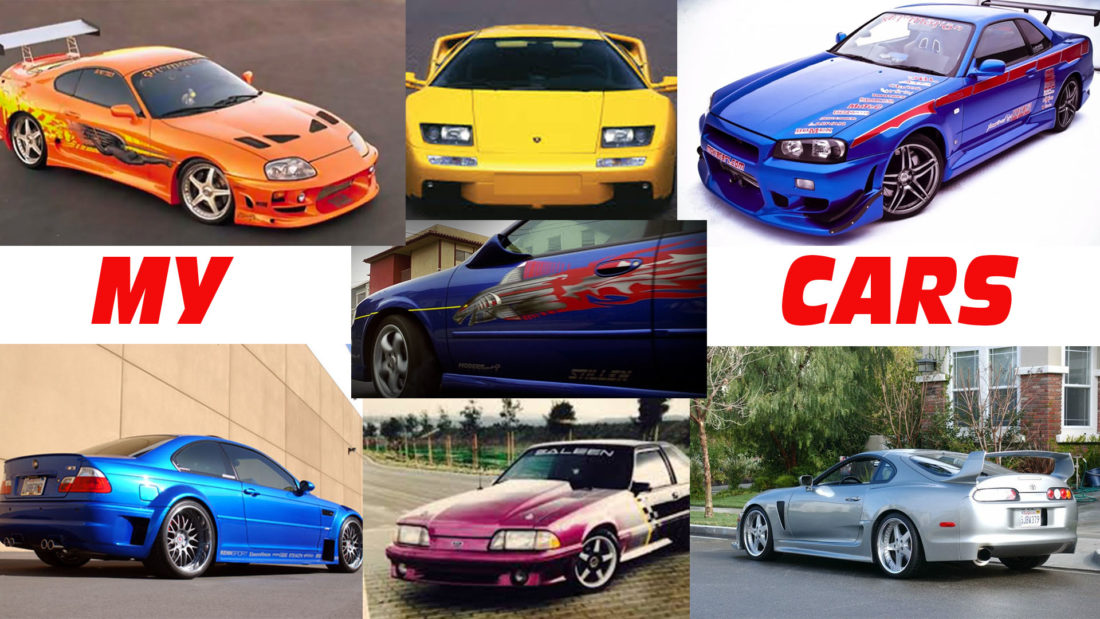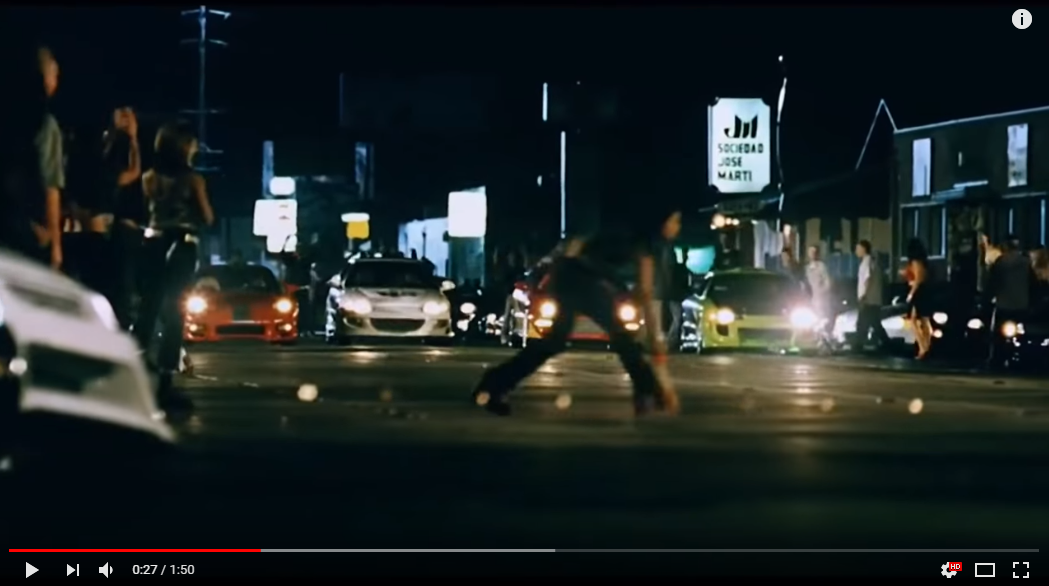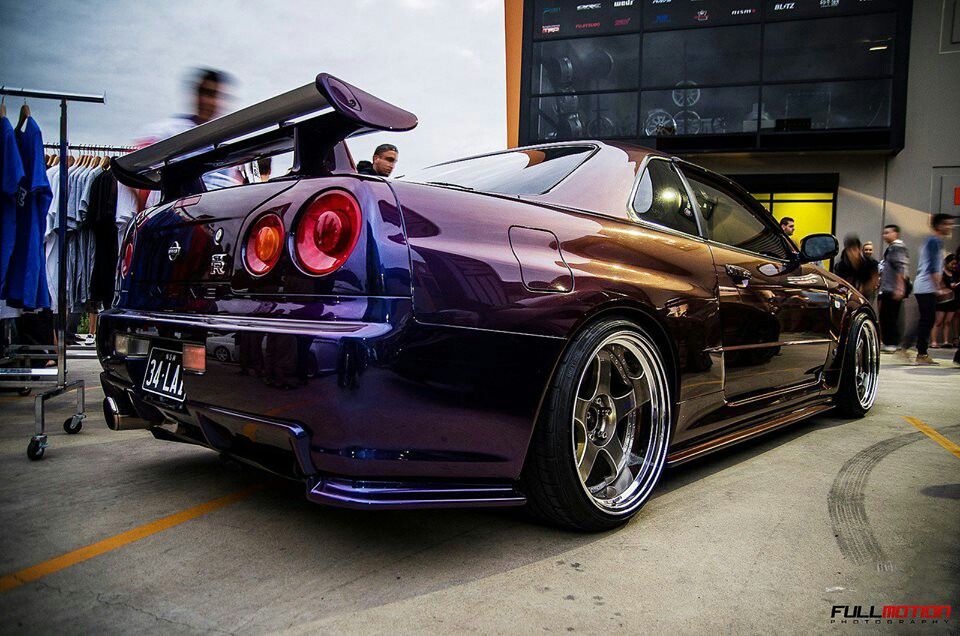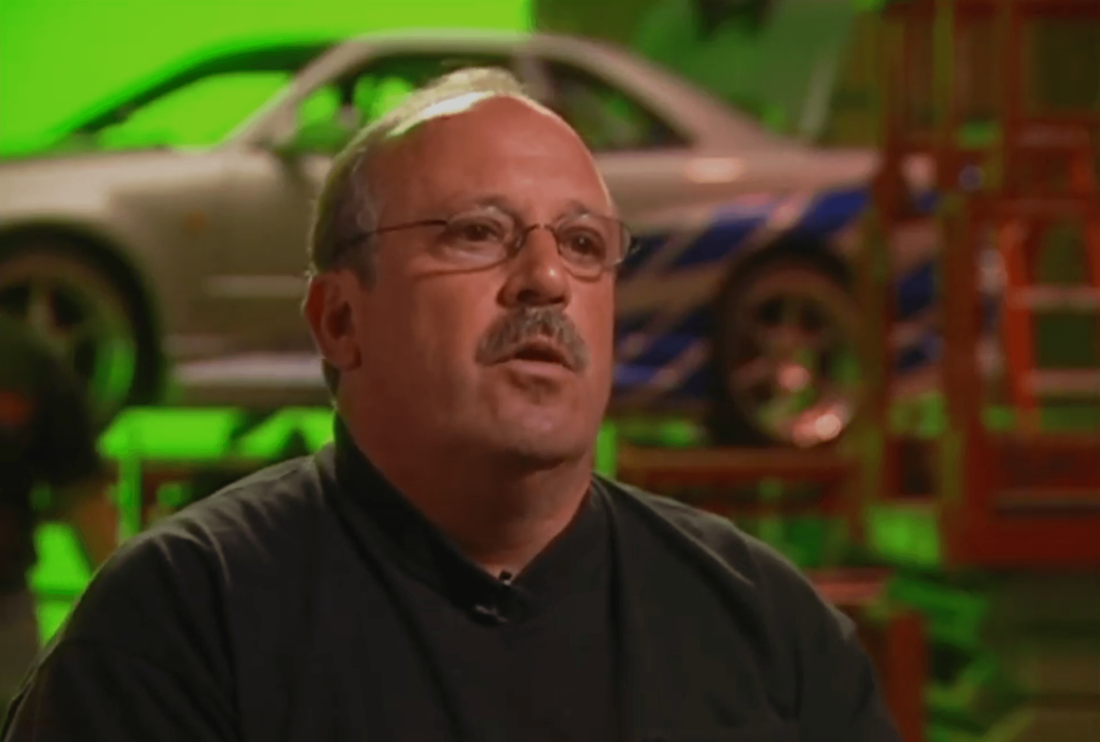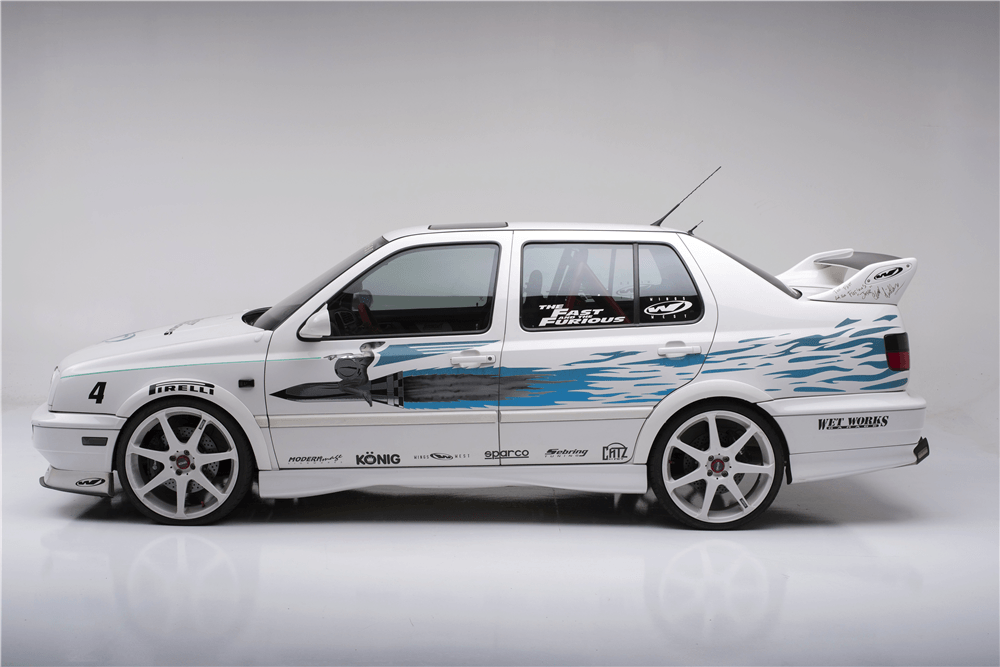How to Build a Replica Fast and Furious Car
Perhaps the most repeated question I get is this one: How can I build a replica Fast and Furious car? There isn't one answer to this question because obviously, it depends on which car you're trying to build. If you're trying to replicate one of the cars from any of the movies AFTER Tokyo Drift, it will be MUCH easier because most of the cars from Fast 4 onwards were little more than tires, wheels, mufflers and some parts needed to perform stunts. So for the sake of this article, let's focus on the idea of building a replica of one of the cars from the first three movies. Spoiler alert: it'll be a multi-year project and will take tens of thousands of dollars and literally THOUSANDS of hours scouring the internet for every classified sale page on the internet - Ebay, Facebook marketplace, ModFinds, individual Facebook Classified pages and so on. BUDGET: If you want to build a Supra replica (from the first movie) or a GTR replica (from the second movie), you better have $100,000 cash in your hand, right now. And no, an 18-year-old kid is not going to get a $150,000 loan from a bank to build a 20-year-old movie
The Cars I’ve Owned
I've resisted the temptation to post this mostly because I don't want people to think I'm bragging. However, if you look at the list, there's hardly much to brag about. I imagine my story isn't much different from those who follow me on social media: I started with a hand-me-down car, which I promptly modifying. I eventually learned that trying to fix up a crummy car with almost no available aftermarket parts make such an endeavor a very poor choice. I learned quickly, however, and moved on to cars that were wholly embraced by aftermarket performance parts. Having grown up in the 1970s, my school's parking lot was full of American iron - Chevelles, Mustangs, Monte Carlos, Buicks, Chevy Vegas, Chargers, Satellites, Cudas, Camaros, and other cars. I've ridden in pretty much every car ever sold in America from the model year 1964 to 1988. By the time I got my driver's license, I already knew that the 1970s and 1980s were a dark time for cars. Laden with restrictive smog equipment, these cars were choked. For the 1978 Pontiac Trans Am (from Smokey and the Bandit), horsepower came in at 185, and torque was 320-lbs.ft., measured at the flywheel (in California). American cars of
Superchips Calls it Quits Due to COVID 19
Superchips Calls it Quits Due to COVID 19 The Facebook that greeted me this morning had the ominous headline - Superchips calls it quits due to COVID 19. The irony was not lost on me. It just so happens that in my Instagram Live session yesterday, a follower asked me what my thoughts were on the move away from internal combustion engines. As the discussion progressed, I touched upon the future of the automotive tuning world once hybrids and fully electric propulsion systems become the only choice. The conversation then continued when someone asked about what were my predictions for the future of the tuning hobby - the ability to modify one's vehicle through some sort of programming device. More on that in a moment. Of course, when I woke up this morning to this note posted on the website of Superchips UK, I was surprised: ***Important Announcement*** Superchips Ltd. Due to the current COVID 19 situation, we have taken the difficult decision to place Superchips Limited into liquidation and have instructed Quantuma to assist with this process. Thank you for your incredible business and support over the years. We alongside Quantuma will be working together over the next few weeks in order to assess whether we can sell
Building a Fast and Furious Replica Car
Building a Fast and Furious Replica Car can be a fun but challenging endeavor. The enthusiasm is understandable, given the excitement that still exists for these movies. It's the same type of enthusiasm I had for cars as a teenager. In fact, I couldn't until I got my driver's license before I started working on cars, so I worked on friend's cars. My buddy had a '78 Ford pickup with a 351C and I changed the carb on that. Another buddy had a 69 Mustang and I installed a Paxton blower on that. And so it went for the next 20 years. I had a day job, but after work, I was tinkering on cars. At 18, I rebuilt my first engine by myself using nothing but at Chilton's repair manual. The car was a 1973 V6 Capri with siamesed exhaust ports and nylon teeth cam/crank gears instead of a timing chain. That was fun! I learned a couple of things early on: 1) If you don't have the money to do it right the first time, you sure as hell don't have the money to do it a second time. 2) If you don't know what the fuck you are doing, hire someone WHO
Fast 9: Why Street Racing Needs to Come Back to the Franchise
Why street racing needs to come back for Fast 9 In September, 2018, I wrote a post outlining why street racing would likely not be making a comeback to the franchise. In the past paragraph of that article, I also outlined how street racing could be a part of the movie. (READ THE ARTICLE HERE). Let's look at some of the reasons street racing needs to come back for Fast 9. In essence, I said that street racing movies don't sell movie tickets, actions movies do. Hollywood has known for decades that any movie they produce must appeal to the widest range of audiences possible. This is the reason why movies like TopGun have men's volleyball scene and why every freaking movie around has some sort of love story in it. As I write this article, the Hobbs and Shaw film just released. Although the global opening isn't for two more weeks, the opening box office weekend here in the USA was mediocre - at $65 million, its a fraction of what Fast 7 brought in on its first weekend, but we must remember that this is a spinoff film. $65 million is actually pretty good, but a bit less than the $75
New “VIDEOS” Page is LIVE
You want Fast and Furious videos? I've got 'em. I've now posted a dedicated page just for video content I'm producing related to the "making of" the movies. The idea is to put all the content in one location for easy reference. Enjoy!
Why GT-R Skyline Prices Are Rising
Another one of my favorite questions - this one shouldn't seem hard to understand, but as evidenced by the flood of messages I get daily on this topic, it's a mystery. Let's Start With Supply and Demand Oh, that simple principal that all first-year economics students learn. As a refreshers, the law of supply states that the quantity of a good supplied (i.e., the amount owners or producers offer for sale) rises as the market price rises, and falls as the price falls. Conversely, the law of demand (see demand) says that the quantity of a good demanded falls as the price rises, and vice versa. How does that apply here? Let's talk exclusively about the R34 GT-R (and if we have to, GTTs). The R34 has not been legal in the USA since the MotoRex scandal back around 2006. If you forgot what that was all about CLICK HERE If you DON'T read the referenced article, you'll have no idea what led to this situation. Regardless, they're not legal until 25 years after the date of manufacture. In other words, if you want any 1999 Skyline, GT-R or otherwise, you're not getting one here LEGALY under 2024. Period. Take this as a fact so that we can
Behind the Scenes – 2 Fast 2 Furious
This behind the scenes 2 fast 2 furious video showcases so many of the tricks used to produce this movie. What was really interesting is how primitive CG was beack in 2002/2003. I worked closely with Al Desario in this film (among others) as we prepared the cars for their big stunt scenes. Enjoy the Video
Dom’s Charger from The Fast and The Furious
Dom's Charger specs remain a bit of a mystery to most people. For starters, just as we did with the other cars in this movie, we had multiple copies of the cars. A quick refresher - in this movie, we would have a "Hero" car. The term "Hero" doesn't mean it's driven by the hero of the film, it means that this was the nicest, prettiest, shiniest car of the several we would use. As far as this movie is concerned, the "Hero 1" title usually meant it had a modified engine with some nice eye candy under the hood, and the interior might have had numerous mods or accessories not found on the stunt cars. The Hero cars are used in "principal photography - in clear English, they're used for 1st Unit filming. For those who don't know, 1st Unit refers to the part of the film crew that focuses on the sequences where actors will appear. 2nd Unit refers to the film crew that focuses on filming the stunts. It's important to note that for this movie, we typically used TWO Hero cars for each car we cast. In short, for every car we picked, we'd have two pretty Hero cars
Why No Brake Calipers on Jesse’s Jetta?
Today, we delve into the burning question - one that has baffled fanboys and newcomers to the Fast & Furious phenomena for the last few years. Truthfully, I'm baffled that so many people don't understand that you can't really drive a car with just one brake caliper. So, in order to set the record straight, I'm answering that question once and for all right here. If I directed you to go this post from one of my social media posts, good for you - you're not as lazy as some people. First off, you have to understand what was going on behind the scenes. When filming these movies, we had multiple copies of every major car. For my Supra for example, we had three identical clones. Clones are needed for use as stunt cars. It went like this: The prettiest, shiniest, most modified version of my Supra was my actual car which was called the "Hero 1" car. We made a clone of that car as back up and dubbed it the "Hero 2" car. This car is used for situations where Hero 1 is not available. Another pair of clones were dubbed "Stunt 1" and "Stunt 2." These cars are used for all the crazy

